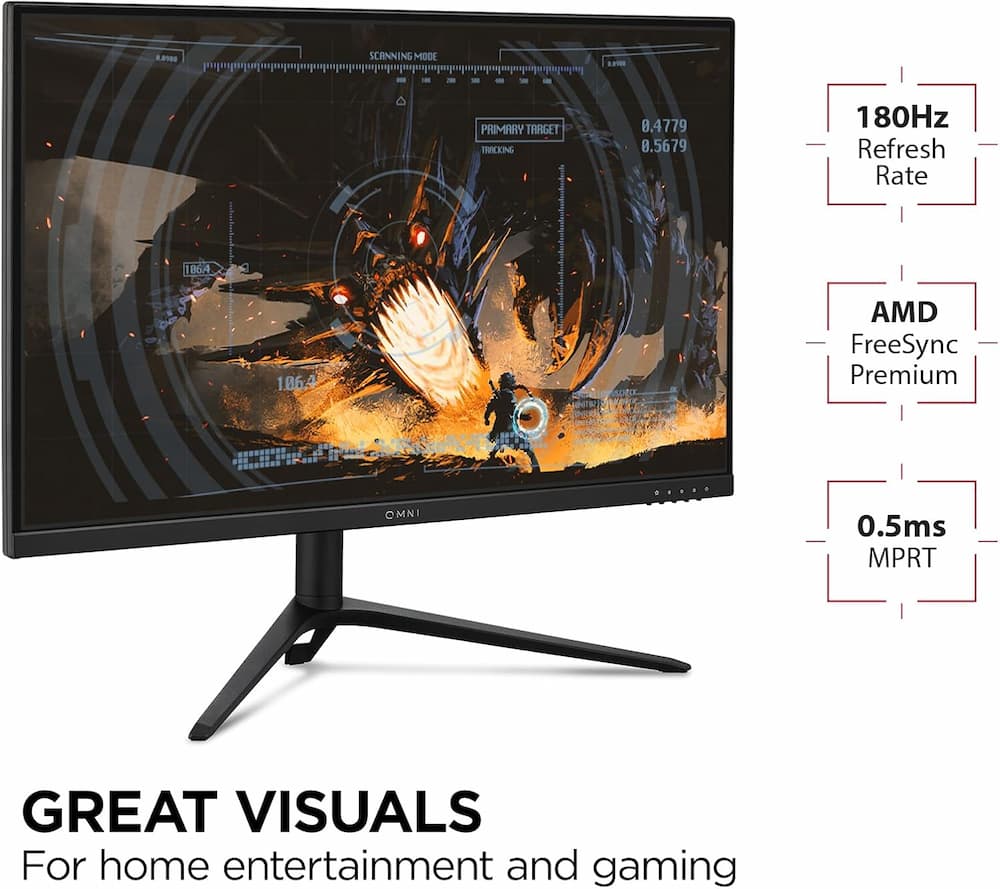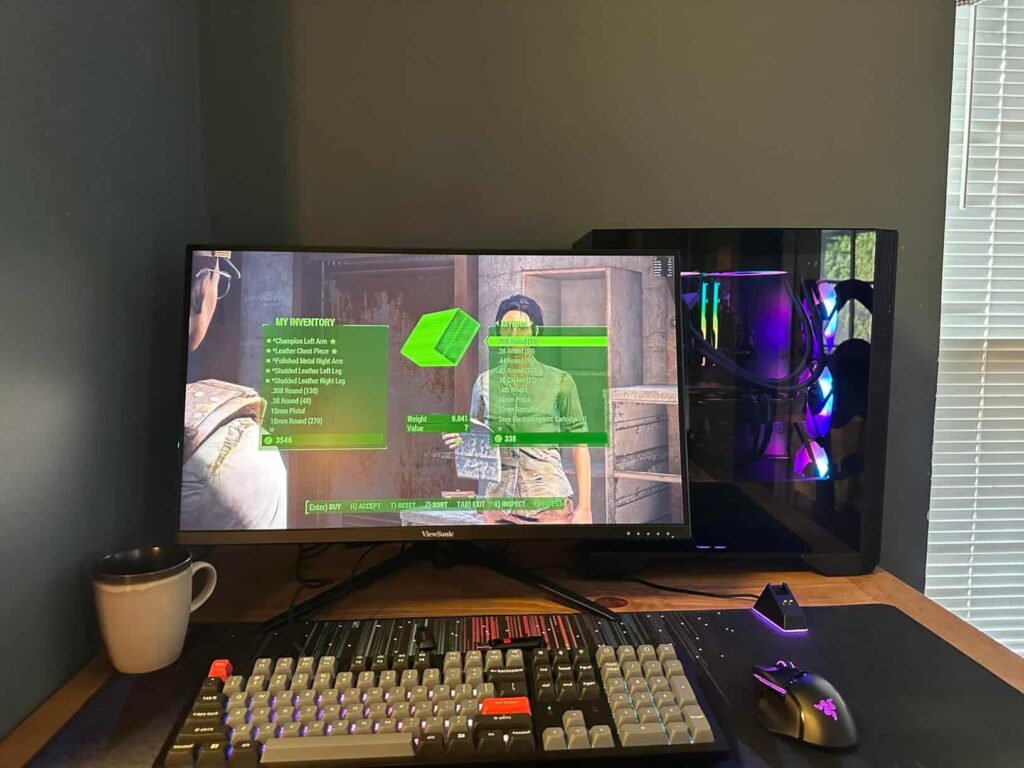If you’ve spent any time looking for a monitor on Amazon or your local electronics store, you’ve probably seen ViewSonic pop up repeatedly, often with a wide range of prices depending on the model. From budget-friendly home office screens to gaming-focused panels and color-accurate monitors for creative work, ViewSonic covers a lot of ground. But is it a brand you should trust with your money?
At Best Monitor Radar, we’ve reviewed countless monitors, and ViewSonic is one of those brands we see people consider often, especially when balancing price, features, and reliability. Let’s break down what you can expect if you’re considering a ViewSonic monitor.
What is ViewSonic?
ViewSonic has been around since the late 1980s, and if you remember the old CRT monitor days, you’ll recall seeing that colorful bird logo on many desks. Today, ViewSonic is known globally, providing monitors for home offices, classrooms, gaming setups, and professional creative environments.

The brand sits in a comfortable middle ground: not as premium-priced as some Dell Ultrasharp or LG UltraFine models but typically offering better reliability and performance than random no-name budget panels.
A Look at Popular ViewSonic Monitor Series
ViewSonic’s lineup is easy to understand once you get familiar with their main series:
- VX Series: Budget-friendly and office-focused monitors, popular for basic productivity, remote work, and streaming.
- XG Series: Gaming monitors with higher refresh rates, Adaptive Sync, and gamer-centric designs.
- VP Series: Monitors aimed at creators needing color accuracy for photo and video editing, design, and content creation.
Some popular models you might encounter include the ViewSonic VX3276-MHD, a sleek 32” FHD monitor for home office use, the ViewSonic XG2705, a 27” 144Hz IPS gaming monitor, and the ViewSonic VP2768a, a 27” QHD monitor geared towards creatives who need solid color reproduction.
Key Features of ViewSonic Monitors
One reason ViewSonic has remained a trusted brand is the variety they offer across panel types:
- IPS panels are common in their VP and many VX/XG models, providing good color consistency and viewing angles.
- VA panels are sometimes used in their curved monitors, giving deeper blacks and good contrast.
- TN panels are rarer but may appear in older budget gaming models.
Resolutions typically range from 1080p (FHD) for budget and office screens to 1440p (QHD) and 4K UHD for gaming and creative-focused monitors.

Refresh rates are another strong point, with many ViewSonic gaming models offering 144Hz to 165Hz, and some even pushing up to 240Hz for competitive gamers.
ViewSonic also includes Adaptive Sync (FreeSync/G-Sync compatibility) on many gaming monitors, and while you’ll see HDR listed, lower-end models typically offer HDR400, which isn’t true HDR but can still give a mild bump in brightness for HDR-compatible content.
Using a ViewSonic Monitor: What to Expect
In our experience testing ViewSonic monitors at Best Monitor Radar, setup is usually quick and straightforward: stand assembly is easy, menus are functional, and connectivity options are sufficient, often including HDMI, DisplayPort, and sometimes USB-C on mid-to-high-end models.

Picture quality on their IPS panels is usually good out of the box for everyday use, and while professionals may still want to calibrate, the default profiles are decent for typical productivity and gaming.
For gaming, ViewSonic’s XG models deliver smooth gameplay at 144Hz, and while they might not match the absolute lowest input lag of eSports-specific monitors, they’re very capable for most gamers.
In the office, the VX series offers slim bezels, decent brightness, and colors that make spreadsheets, web browsing, and Netflix sessions pleasant without breaking your wallet.
What People Like About ViewSonic Monitors
Across forums and Reddit threads, users often praise ViewSonic monitors for being reliable, well-built, and offering good value for the price.
“Bought the XG2705 for my son’s gaming setup, and it’s been a great monitor for Fortnite and Apex without spending a fortune.” – Reddit
“My VP2768a needed minimal calibration and now looks fantastic for Lightroom editing.” – u/PhotoDad
ViewSonic’s customer support also generally receives positive feedback, with many users mentioning that warranty claims are handled efficiently, especially compared to lesser-known budget brands.
The Downsides to Keep in Mind
No monitor brand is perfect, and ViewSonic is no exception. Some budget VX models have noticeable IPS glow and minor backlight uniformity issues, particularly in dark rooms.
HDR on lower-priced models often doesn’t deliver a true HDR experience, so if HDR is a priority, it’s better to look for a higher-tier panel with HDR600 or better.
The on-screen display (OSD) menus and control buttons can feel clunky on some models, though recent releases with joystick navigation are improving this experience.
ViewSonic vs Other Monitor Brands
When we compare ViewSonic with Dell, LG, and ASUS, here’s how it often shakes out:
- ViewSonic usually offers better value pricing while maintaining reliability.
- Dell tends to excel in build quality and premium feel, especially in their Ultrasharp line.
- LG’s Nano IPS panels often edge out ViewSonic in color vibrancy.
- ASUS may have the edge for high-refresh gaming monitors with ultra-low latency.
If your goal is solid performance without paying a brand premium, ViewSonic often sits in the sweet spot.
Who Should Consider ViewSonic Monitors?
ViewSonic is a good fit for:
- Office and productivity users who need reliable, clear screens for daily work.
- Casual and mid-level gamers who want smooth gameplay at 144Hz/165Hz without overspending.
- Creators on a budget who need solid color accuracy for photo and video editing.
Who Should Avoid ViewSonic Monitors?
You might want to skip ViewSonic if:
- You’re a professional colorist demanding top-tier HDR performance and DCI-P3 coverage.
- You’re a competitive eSports gamer chasing the lowest possible input lag on 240Hz+ panels.
- You need the highest peak brightness and HDR quality for entertainment or creative work.
Final Verdict
ViewSonic monitors strike a solid balance between price, performance, and reliability. For students, remote workers, creators on a budget, and casual gamers, it’s a brand that often delivers exactly what you need without unnecessary extras.
If you demand flagship-level HDR or ultra-competitive gaming specs, it’s worth looking at premium options from Dell, LG, or ASUS. Otherwise, ViewSonic remains a safe, practical choice for most users.
FAQ
Are ViewSonic monitors reliable?
Yes, they’re generally reliable with consistent panel quality.
Is ViewSonic good for gaming?
Yes, especially the XG series, which offers good refresh rates and FreeSync/G-Sync support.
Do ViewSonic monitors have good color accuracy?
Most IPS models offer decent color accuracy out of the box, and the VP series is calibrated for creative work.
What warranty comes with ViewSonic monitors?
Most models come with a 3-year limited warranty, but always confirm with your retailer.